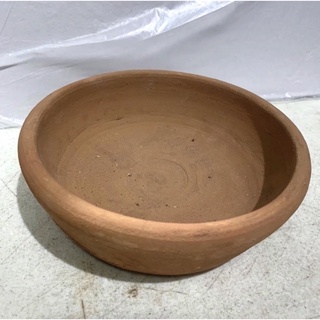Bibingka Cooking Set
A Philippine cake that is made with rice flour, water, and sometimes other ingredients (such as butter, sugar, cheese, or coconut) and that is traditionally cooked between banana leaves Mrs. Garcia is cutting slices of bibingka for herself and for her cousin.
Origins
Bibingka Galapong cooked with slices of salted egg with toppings of grated coconut and kesong puti (carabao cheese)
The shared origins of bibingka from the Philippines and Indonesia is widely acknowledged especially given that the Indonesian bibingka is from Eastern Indonesia, the regions closest to the Philippines with the most closely related cultures.
Some authors have also proposed a connection between the Goan dessert bebinca (or bibik) and the Southeast Asian bibingka due to the similarity in names. They believe that the Portuguese may have introduced it to Southeast Asia from Goa. This is unlikely, however, given that the Philippines, where bibingka is most widely known, was never a colony of Portugal. The preparations of the dish are also very different; the Goan dessert is a type of layered coconut pudding similar to Filipino sapin-sapin and Indonesian kue lapis, meanwhile the Filipino bibingka is a baked glutinous rice cake. The only similarity to the two dishes is that bebinca and bibingka both use coconut milk. Rice-based dishes are also far more diverse in Southeast Asia, where rice is an ancient Austronesian staple crop.
Thus it is more likely that the Portuguese introduced the term to Goa from the Philippines, rather than the other way around. Similar to how the art of windowpane oyster shell windows were also introduced from the Philippines to Goa (they are still called capiz in Goa after the Philippine province of Capiz).
In the Philippines
Bibingka is a traditional Philippine Christmas food. It is usually eaten along with puto bumbóng as a snack after attending the nine-day Simbang Gabi ('Night mass', the Filipino version of Misa de Gallo)[5] and, therefore, it is commonly found sold near the vicinity of churches. In the municipalities of Baliuag and San Miguel, Bulacan, bibingka is sold along with a complimentary serving of fresh salabat.
As of October 9, 2007, the town of Dingras, Ilocos Norte in the Philippines is expecting a Guinness World Records certification after baking a kilometer-long cassava bibingka made from 1,000 kilos of cassava and eaten by 1,000 residents.
Preparation
Traditionally prepared bibingka in Baliuag, Bulacan
The traditional recipe for bibingka calls for glutinous rice to be soaked in water overnight in tapayan jars to allow it to ferment with the addition of wild yeast called bubod or tuba palm wine. The soaked and fermented rice is then ground into a smooth and viscous batter called galapong through the use of a millstone or gilingang bato. This method makes use of the fermentation to produce the leavening agent for the rice cake and also to provide a characteristic faint fermented aftertaste to the resulting product.[7] With the time-consuming process of the traditional preparation, modern versions sometimes use regular rice flour or Japanese mochiko flour in place of galapong. Other ingredients can also vary greatly, but the most common secondary ingredients are eggs and milk.
In cooking the bibingka, a shallow terra cotta bowl is lined with a single large section of a banana leaf. The bowl is then placed over preheated coals and the rice flour and water mixture is poured into the banana leaf liner, taking care not to spill it out directly into the bowl itself. Sliced salted egg and cheese are then added on top of the batter; uncommon toppings can include pinipig (pounded immature rice grains), chocolate, fruit preserves/jams, and pineapple. A mixture of two or more of these toppings on a single bibingka are also common and sometimes called bibingka especial.
Bakery-made bibingka in banana leaf liner showing the distinctive notched edges from cupcake tin molds
Another piece of banana leaf is added to the top and the container is then covered with a flat metal sheet holding more preheated coals. The end result is a soft and spongy large flat cake that is slightly charred on both surfaces and infused with the unique aroma of toasted banana leaves. Additional toppings are then added, usually consisting of butter/margarine, sugar, cheese, or grated coconut.
More modern preparation of the dessert makes use of metal cake pans and purpose-built multi-tiered standing electric ovens. The resulting product from this method of preparation lacks the distinctive smoky smell of charcoal but is otherwise the same with regards on taste and texture, especially if banana leaves are used to line the cake pans. Mass-produced bibingka in Philippine bakeries are also made using characteristic tin molds that give them a crenulated edge similar to large puto or puto mamon (cupcakes).
List of equipment
1.kalan or Clay Burner
2. Orno or Clay Molder
3. Lata or Tray Cover





































